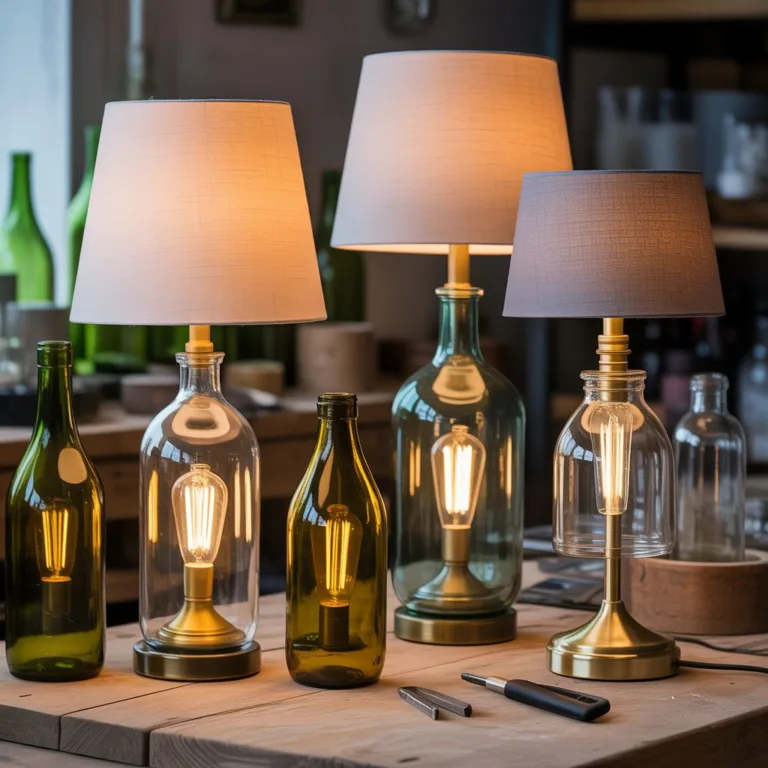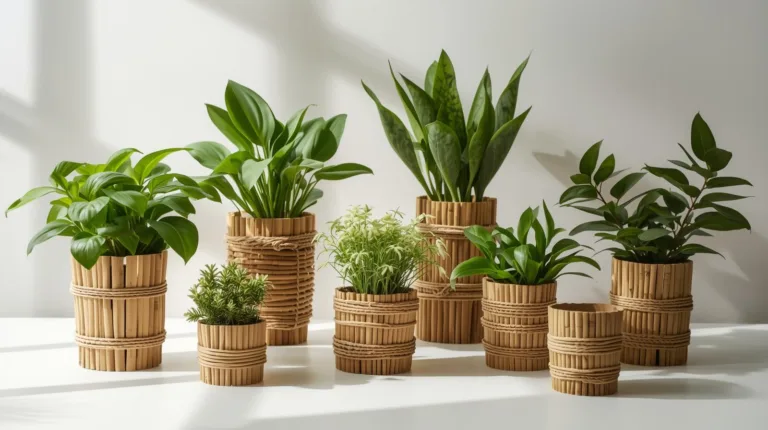Designing a bathroom that feels calm, natural, and environmentally conscious is becoming a popular way to bring sustainability into daily living. Among the most timeless and eco-friendly materials available, stone and clay stand out for their durability, beauty, and connection to the Earth. These materials not only enhance aesthetics but also reflect a growing shift toward conscious consumption and sustainable home design.

Whether used for tiles, sinks, or small décor accents, stone and clay introduce warmth and texture that elevate even the simplest bathroom into a serene sanctuary. Creating sustainable bathroom décor using stone and clay is not just about visual appeal — it’s about crafting a space that supports wellness, reduces waste, and harmonizes with nature.
Why Choose Stone and Clay for a Sustainable Bathroom
Natural materials like stone and clay have been used in architecture and design for centuries. Their appeal lies in their strength, recyclability, and organic aesthetic. When properly sourced, they can significantly reduce the environmental footprint of your bathroom.
- Longevity: Both materials are incredibly durable, which means fewer replacements over time. This reduces waste and resource consumption.
- Natural Origin: Stone and clay come directly from the Earth, avoiding the energy-intensive manufacturing processes of plastics or synthetic composites.
- Timeless Design: Their colors, textures, and patterns never go out of style, ensuring your bathroom remains elegant for years.
- Non-Toxic Environment: Unlike many synthetic materials, they don’t release harmful volatile organic compounds (VOCs), improving indoor air quality.
By integrating stone and clay, your bathroom becomes a statement of eco-conscious design that balances sustainability and sophistication.
Understanding the Materials: Stone and Clay in Depth
Before diving into design ideas, it’s useful to understand the characteristics of each material and how they contribute to sustainability.
Stone
Natural stones such as granite, marble, slate, and river rock are extracted with minimal processing. Their natural density makes them resistant to water and bacteria — a perfect fit for humid bathroom environments. Reclaimed or locally sourced stone reduces environmental impact even further.
Clay
Clay can be molded into countless forms — from handmade tiles to sink basins or decorative accessories. Terracotta and ceramic clay pieces add warmth through earthy tones and matte finishes. When fired in energy-efficient kilns or sourced from sustainable workshops, clay décor supports both the planet and local artisans.
Combining these two materials introduces balance: the cool solidity of stone with the gentle, crafted touch of clay.
Sustainable Sourcing and Ethical Considerations
True sustainability starts with responsible sourcing. When choosing stone or clay, look for materials that are ethically mined and produced.
- Reclaimed stone: Salvaged stone tiles or countertops from demolition sites can be polished and reused.
- Local sourcing: Purchasing from local quarries or ceramic artisans reduces transportation emissions.
- Eco-certified suppliers: Choose suppliers that follow environmental standards for quarrying and kiln operations.
- Low-impact production: Support workshops that use renewable energy for firing clay or recycling water in the production process.
Choosing sustainable materials doesn’t just minimize waste; it also supports ethical labor practices and responsible land use.
Natural Stone Applications for Bathroom Décor
Stone adds timeless beauty and structure to a bathroom. It’s versatile enough for minimalist modern designs or rustic, spa-like retreats.
Stone Sinks and Basins
A stone sink carved from granite or river rock becomes a centerpiece. Each piece has unique veining and color, ensuring no two are alike. Natural finishes retain the raw beauty of the material, while polished surfaces reflect light and sophistication.
Stone Countertops
Granite, marble, and quartzite are popular options for countertops. Their durability withstands daily use, and their natural hues complement earthy or neutral color schemes. For sustainability, choose recycled stone composites that repurpose leftover slabs.
Pebble Flooring
Pebble or river stone flooring offers a natural, spa-like texture underfoot. Sealed properly, it resists moisture while providing subtle foot massage benefits. It also pairs beautifully with wood or clay accessories for an organic balance.
Accent Walls
A stone-clad wall can serve as a focal point behind a bathtub or vanity. Light-colored stones like travertine brighten smaller bathrooms, while darker tones like slate add depth and intimacy.
Clay Elements That Add Warmth and Craftsmanship
Clay brings softness and human touch to bathroom design — every piece carries the mark of craftsmanship.
Clay Tiles
Handmade clay or terracotta tiles are among the most eco-friendly wall or floor options. Their natural pigments eliminate the need for artificial dyes. When sealed properly, they are waterproof and easy to maintain.
Decorative Clay Accessories
Small touches like clay soap dishes, toothbrush holders, or planters add warmth and texture. These can be easily made at home using air-dry or kiln-fired clay, making them an ideal DIY project for sustainability enthusiasts.
Clay Basins and Pots
Terracotta or glazed ceramic basins introduce a rustic elegance. Paired with brass or bamboo fixtures, they create a cohesive, nature-inspired aesthetic.
Textured Clay Walls
Clay plaster or “earth plaster” walls are a growing trend in sustainable design. They naturally regulate humidity, absorb odors, and provide a velvety matte finish that enhances relaxation.
Combining Stone and Clay in Design Harmony
When these materials are used together, they create a sensory balance — cool and warm, rough and smooth, solid and molded.
Here are some ideas to blend them effectively:
- Use stone for structure (floors, sinks, and counters) and clay for accents (tiles, planters, and accessories).
- Match earthy tones like beige, cream, and terracotta with neutral stones like limestone or quartzite.
- Integrate plants or bamboo décor to tie the natural theme together.
- Use indirect lighting to highlight the textures and shadows of the materials.
This combination captures both durability and craftsmanship — a reflection of the natural world in your private space.
Eco-Friendly Maintenance and Longevity
A sustainable bathroom extends beyond materials; maintenance practices are equally important.
- Natural cleaning: Use vinegar, baking soda, and castile soap instead of harsh chemicals.
- Regular sealing: Stone surfaces benefit from eco-friendly sealants that protect against moisture without releasing toxins.
- Proper ventilation: Keep humidity balanced to prevent mold, preserving both materials and indoor air quality.
- Repair instead of replace: Small chips or cracks in clay or stone can often be repaired, avoiding wasteful replacements.
Taking care of these natural materials ensures they last for decades while maintaining their organic charm.
DIY Ideas Using Stone and Clay
For those who enjoy hands-on projects, there are plenty of creative ways to incorporate these materials sustainably:
- Clay candle holders: Shape small bowls or cylinders from natural clay, dry them, and use soy candles for an eco-friendly touch.
- Pebble soap trays: Arrange flat river stones in a shallow dish for a natural soap holder that allows drainage.
- Mini stone shelves: Use reclaimed marble or slate pieces to make minimalist corner shelves.
- Clay planters: Small terracotta pots can hold herbs like mint or lavender, adding both aroma and freshness to your bathroom.
DIY décor not only personalizes your space but also deepens your connection to the sustainability values behind it.
Integrating Water Efficiency and Eco Design
Sustainable bathroom design goes beyond aesthetics — it also focuses on reducing water and energy consumption.
- Low-flow faucets and showers: Pair with natural materials to enhance both function and form.
- Recycled water systems: Greywater recycling supports sustainable water management.
- Natural ventilation: Use clay walls and open layouts to promote air circulation and humidity control.
- Energy-efficient lighting: Highlight stone and clay textures with warm LED fixtures that mimic natural sunlight.
These design choices ensure that your bathroom is not only visually sustainable but environmentally responsible in every aspect.
A Space That Reflects Mindful Living
A bathroom built with stone and clay becomes more than a functional room — it’s a daily reminder of balance, care, and sustainability. Each material tells a story of the Earth’s natural beauty and the power of mindful design.
Creating sustainable bathroom décor using stone and clay invites calm and connection. The cool stone under your hands, the soft clay on the walls, and the natural light reflecting across their textures create a sanctuary of simplicity.
By embracing these elements, you’re not just decorating a room — you’re cultivating an eco-conscious lifestyle that values authenticity, longevity, and harmony with nature.
It’s a quiet revolution of design — one bathroom at a time.

Lucas Hartman is a DIY enthusiast and sustainability advocate focused on natural crafts and eco-friendly home décor. With a background in arts and design, Lucas creates tutorials that help families and hobbyists transform everyday recycled or organic materials into beautiful, functional projects.



